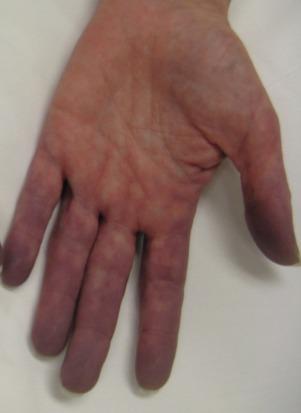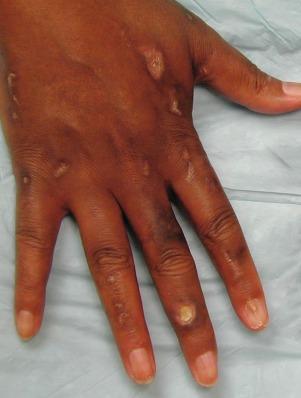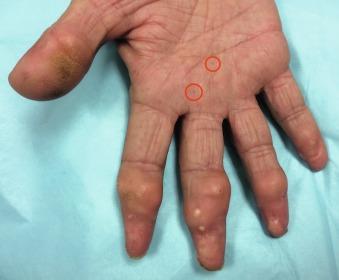Physical Address
304 North Cardinal St.
Dorchester Center, MA 02124
In the modern-day era of medical diagnosis facilitated by sophisticated radiographic imaging and/or comprehensive serological testing, a thorough physical examination remains vital in recognizing the dermatological manifestations of chronic vascular diseases. Accurately identifying cutaneous signs of lymphovenous hypertension and peripheral artery disease (PAD) assists in their diagnosis as well as associated staging and classification. Similarly, the vasomotor diseases are principally diagnosed by their unique and often overlapping cutaneous manifestations. It is important that the vascular specialist consistently recognizes not only classic but also nuanced dermal expressions of lymphatic, venous, arterial, and vasospastic disease. Correct identification of dermatological vascular manifestations obviates expensive and unnecessary testing including potentially deleterious invasive radiological procedures as well as costly consultations. A pictorial review of classic and “not so classic” cutaneous manifestations of vascular diseases is presented with an emphasis on esoteric photographic depictions.
PAD includes stenotic and occlusive diseases predominantly mediated by atherosclerosis and thromboemboli affecting the aorta and the arteries of the lower extremity (see Chapters 11 and 18 ).
The arterial vascular examination typically documents weak or absent pulses below the level of arterial stenosis with occasional bruits over stenoses. Although poorly sensitive and nonspecific, the examination in critical limb ischemia often yields thin, dry, shiny, and hairless skin with toenails that are brittle, hypertrophic, and slow growing. Muscle atrophy from inability to exercise may exist. Comparison of color, temperature, and trophic changes between extremities can provide a reasonable assessment of PAD severity unless bilateral disease exists.
Ischemic ulcerations from PAD are typically located on the distal part of the toes and between the digits or at sites of increased focal pressure, such as the metatarsal heads and malleoli. PAD ulcerations are typically severely painful, dry, pale, or black, and punched out with a nongranulating base. Dry gangrene displays a dry, hard texture usually with a clear demarcation between viable and black, necrotic tissue ( Fig. 60.1 ). Wet gangrene is moist and mephitic with blistering and swelling.

While typical PAD-mediated ischemic ulcers are easily identified, correctly diagnosing an atypical ischemic ulceration of the lower extremity can be more challenging. Although the dried, pale, or necrotic appearance of the ulcer base is similar in both cases, the location of typical PAD and atypical ischemic limb ulcerations is frequently dissimilar. Specifically, a PAD ischemic ulceration is usually located distally whereas the atypical ischemic ulceration can involve the more proximal portion of the limb like the thighs and buttocks ( Fig. 60.2 ). Additionally, the abdominal wall and breasts can be ulcerated. In distinct contrast to typical PAD ulcerations, atypical ischemic ulcerations often evolve in the absence of significant large artery occlusive disease and thus the distal pulses are usually easily palpable. Finally, atypical ischemic leg ulcerations may occur with cutaneous abnormalities such as macules, palpable or retiform purpura, petechiae, hemorrhagic bullae, nodules, and/or livedo reticularis ( Fig. 60.3 ). A differential diagnosis of atypical ischemic ulcerations is listed in Box 60.1 .


Antiphospholipid syndrome
Calciphylaxis
Warfarin skin necrosis
Heparin skin necrosis
Small and medium-sized vasculitis
Atheroembolic disease
Recluse spider bites
When the atypical ischemic limb ulceration is misdiagnosed as a sequel of PAD, expensive, unnecessary, and potentially injurious radiological investigations are typically ordered. Additionally, unwarranted arterial revascularization may be undertaken and is more likely to occur in the setting of calciphylaxis and atheroembolic disease as both of these disorders usually occur in a background of PAD.
Raynaud phenomenon represents an overactive arterial response to cold or stress that results in characteristic well-demarcated digital color changes with sensory symptoms (see Chapter 46 ).
With a thorough history and physical examination that includes nailfold capillaroscopy and adjunctive testing, Raynaud phenomenon is classified as primary or secondary. Clinical features that suggest a diagnosis of secondary Raynaud phenomenon are outlined in Box 60.2 .
Age 40 or older at onset
Male gender
Frequent and severe vasoconstrictive attacks
Asymmetric attacks
Thumb involvement
Fixed digital ischemia (pitting scars, ulcerations, gangrene)
Abnormal nailfold capillaries
Manifestations of an underlying disease
Digital swelling
Ischemic changes proximal to the fingers or toes
Abnormal laboratory parameters
Classic Raynaud phenomenon is exemplified by acute onset digital coldness with well-demarcated color changes of vasoconstriction-mediated pallor ( Fig. 60.4 ), followed by cyanosis from tissue hypoxia, and finally reperfusion-associated erythema. However, not all patients display these triphasic color changes nor do they always follow this stereotypical sequence. Attendant symptoms include pain and paresthesias. Both color changes and symptoms should be rapidly and completely reversible in primary Raynaud phenomenon yet can be more severe, protracted, and disabling in the setting of secondary Raynaud phenomenon. The fingers are more likely to be affected than the toes in both primary and secondary Raynaud phenomenon ( Fig. 60.5 ). The index, middle, and ring fingers are the most likely involved digits whereas the thumb is often spared. Thumb involvement suggests a secondary cause for Raynaud phenomenon exists ( Fig. 60.6 ). Raynaud phenomenon can also affect the ears, nose, face, knees, and nipples.



Scleroderma is noteworthy as it is the most common cause of secondary Raynaud phenomenon. Moreover, 58% of scleroderma patients develop at least one digital ulcer at some point in their lifetime and in one-third of cases the ulcers will become chronic. Although classic scleroderma-mediated ulcerations involve the fingertips, some patients will manifest ulcerations along the extensor surfaces of the fingers including the joints ( Fig. 60.7 ). The genesis of extensor ulcerations is thought to be due to a combination of digital ischemia, flexion contractures with increased skin tension, and repetitive microtrauma. Limited scleroderma can be complicated by dermal and soft tissue dystrophic calcification or “calcinosis cutis” in 20% to 40% of subjects and is most recognizable in the fingers ( Fig. 60.8 ). Calcinosis can extrude from the skin, ulcerate, and is often quite painful. Lastly, the combination of chronic digital inflammation with active and/or healed ischemic scleroderma ulcerations can yield a characteristic pattern of patchy dermal hyperpigmentation and hypopigmentation referred to as a “salt and pepper” appearance (see Fig. 60.7 ).


Become a Clinical Tree membership for Full access and enjoy Unlimited articles
If you are a member. Log in here